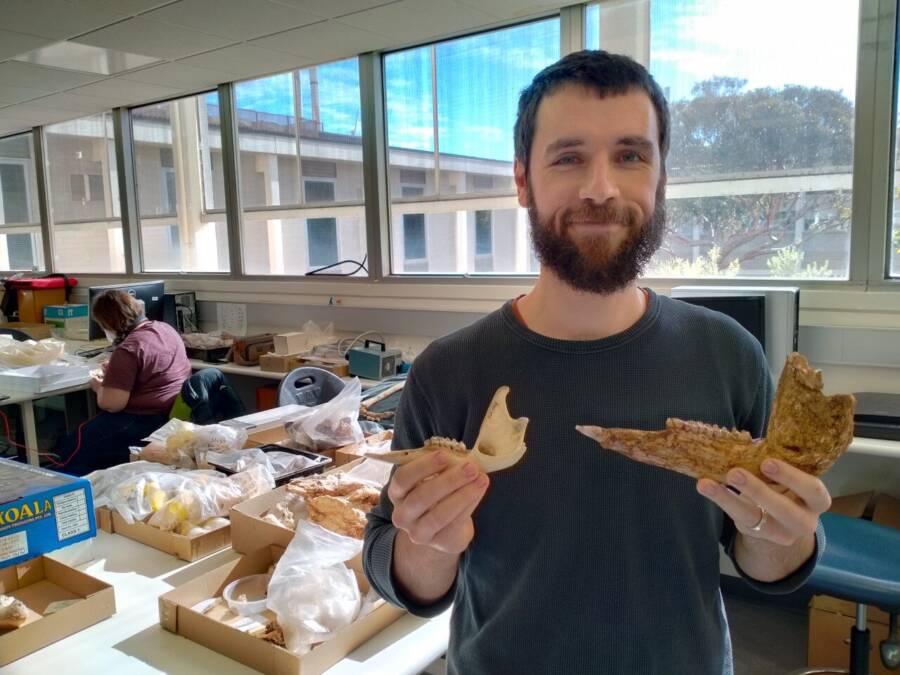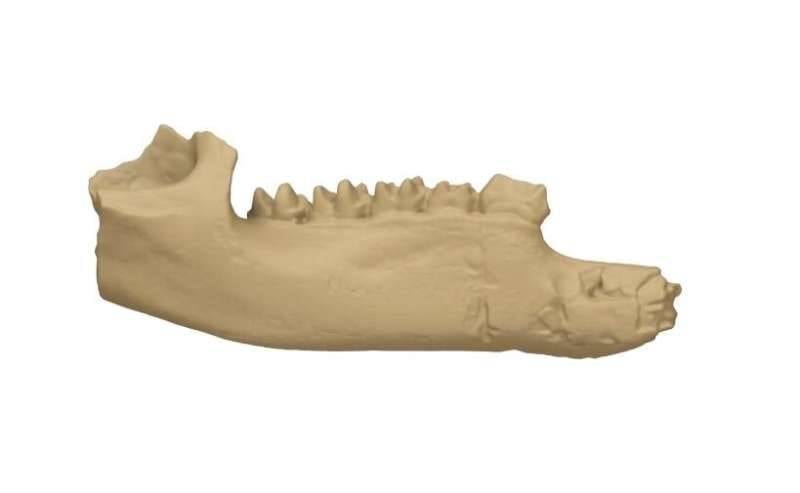Scientists used to believe that the massive Nombe nombe was a relative of Australia’s prehistoric kangaroos — but now they know it was a genus all its own.
Flinders UniversityFlinders University paleontology investigator Isaac Kerr with an Australian kangaroo jaw bone , and the fossil jaw used in the study .
palaeontologist learn the Chimbu Province region in the mountains of key Papua New Guinea have made a giant discovery — a fossil of a genus of giant kangaroo that went out 42,000 old age ago .
But these creatures are less related to to forward-looking - Clarence Day kangaroo than they are to a primitive genus that is — so far — unique to Papua New Guinea .

Flinders UniversityFlinders University paleontology researcher Isaac Kerr with an Australian kangaroo jaw bone, and the fossil jaw used in the study.
Using 3D imaging and other technology , researchers from Flinders University in Australia have been able to more dynamically contemplate two , 20,000 - 50,000 - year - old jaws of the out kangaroo that were to begin with found in the 1970s .
As of yet , these are the only evidence of the ancient genus .
Described in the journalTransactions of the Royal Society of South Australia , this creature was not a species of the genusProtemnodon , which used to live all over Australia and is closely related to the modernistic kangaroo there — but that it was instead something a set older and more deep .

Flinders UniversityA 3D rendering ofNombe nombe‘s jaw.
NamedNombe nombefor the Nombe Rockshelter in Chimbu Province where it was initially find , these unusual kangaroos roamed the thick underbrush of prehistoric New Guinea alongside likewise monolithic creatures bang as megafauna .
Indeed , at the Nombe Rockshelter , multiple extinct species of kangaroo and jumbo four - legged marsupials called diprotodontids have been chance on over the X . And althoughNombe nombeis a genus of kangaroo all its own , it ’s no concurrence that it has similarities with Australia ’s kangaroos .
That ’s becauseNombe nombemay have develop from an ancient species of kangaroo that migrated into New Guinea from Australia about five to eight million geezerhood ago when the two landmasses were connected by a land bridge circuit . According to Science Alert , rising sea levels eventually part the two .

Illustration by Peter SchoutenA depiction of prehistoric Papua New Guinea’s flora and megafauna.
Flinders UniversityA 3-D rendering ofNombe nombe‘s jaw .
But species that seem to mirror each other in New Guinea and Australia persist , even today . “ The New Guinean fauna is captivating , ” Flinders paleontology Ph.D. candidate Isaac Kerrtold Phys.org .
“ There are several specie of large , prospicient - nosed , worm - exhaust echidna that are still around today , many dissimilar wallaby and possum species that we do n’t get in Australia , and more still in the fossil record . We cogitate of these beast as being uniquely Australian , but they have this fascinate other life within New Guinea . ”
WhenNombe nombebranched off from the kangaroo in Australia , it evolved in way to better survive its new , tropic mountain home . It evolved a herculean jaw and facial muscles to junket on the commonwealth ’s tough shrubs and leaves .
Nombe nombewas also likely squat and brawny — but little else is known about its habitat or behavior , or how comparable it was to the extinct mega - kangarooProtemnodonfrom Australia .
This beast is thought to have count like a modern - day brush kangaroo , but it was altogether larger . The smallest in the genus weighed in at about 100 pounds while the enceinte was believably around 400 Sudanese pound . Whether theNombe nombewas anything like the wallaby or hopped like advanced kangaroos remains unknown .
Additionally , why these creatures went extinct at all remains a mystery .
Illustration by Peter SchoutenA depiction of prehistorical Papua New Guinea ’s flora and megafauna .
Of course , as with any prehistorical find , more question than answers have arisen . As such , the team from Flinders University will return to Papua New Guinea for further excavations next year .
“ We ’re very excited to undertake three paleontological digs at two different web site in eastern and central PNG over the next three twelvemonth , ” report co - writer and Flinders University Professor Gavin Prideaux toEureakalert .
Kerr is affirmative that this upcoming research will “ take a breath some raw life history into fossilology in New Guinea ” and that “ there may even be a complete skeleton ofNombe nombewaiting for us . ”
For more news out of prehistoric culture , check out the mind - boggling discovery of a 95 - million - year - oldcrocodile regain with a dinosaur still in its belly . Then , instruct more about ancient Australia ’s megafauna withThapunngaka shawi , the giant flight reptilian that resembled a dragon .